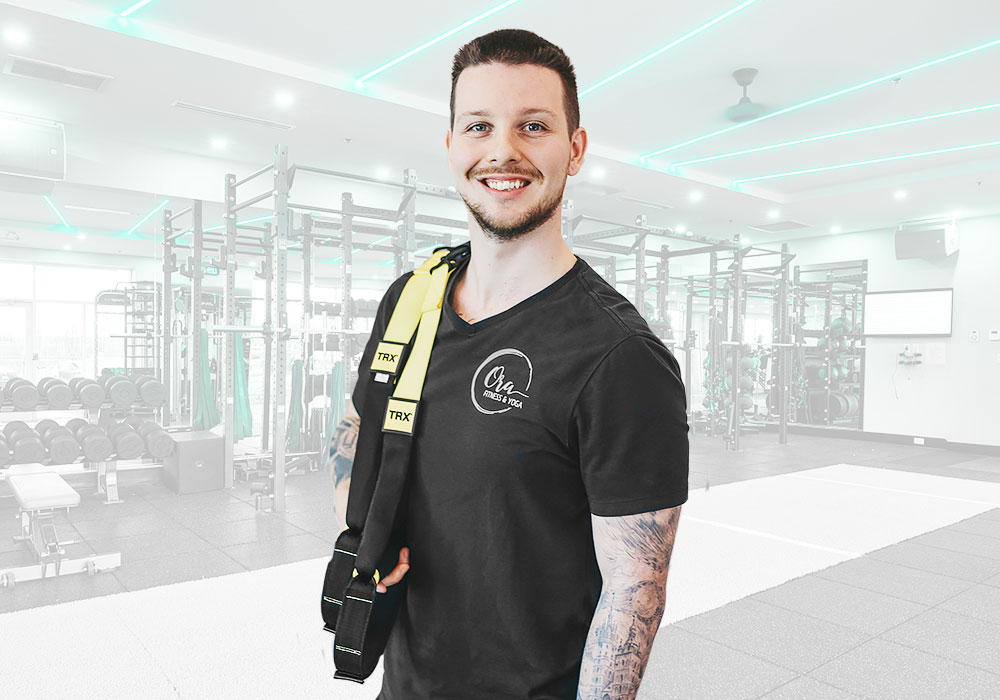For most men, an injury means skipping the gym for months at a time. Sometimes, they retire their workout clothes for good. But here’s the good news: there’s always a way to work around an injury and build the body you want. Let me tell you a story of one of my clients, and let’s call him Strong Steve. Who in the beginning didn’t like my style of training because he “knew it” already. But, little did Strong Steve know, something was about to change in his life.
Steve’s Story
It was a beautiful and perfect Summer day to ride a motorcycle. When Strong Steve hit the loose gravel, he knew he was in trouble.
That exact moment Strong Steve did the very thing you’re not supposed to do during a motorcycle skid: he put his left foot down. The good news is that the bike didn’t drop; it made it through the roundabout on two wheels. The bad news is that knee ligaments, even strong ones like Strong Steve’s, aren’t meant to withstand massive torque.
“Screw it! What’s a little knee pain?” Strong Steve said to himself.
Strong Steve knew something felt weird and a little “off”, but there wasn’t much pain. It might have been the distraction of trying to keep the bike upright. Or maybe the fight or flight hormones were kicking in. But since Strong Steve was on his way to the gym when it happened, he didn’t think twice about it. He put the near accident behind him, drove to the gym, and prepared to work his legs. With his knee wraps and heavy metal music, and everything felt fine in the squat rack.
But, the knee felt a little shaky. “But what’s a little knee pain?” he thought. “If I work through it, it’ll go away in a few weeks.” He was sure of it.
But, it got worse. Much worse.
Of course, Strong Steve was big, muscular, and I thought he was invincible. So he kept training the only way he knew how: with heavy lifts and low reps. He continued to squat, deadlift, row, and bench press, the way he had been taught by all the serious workout articles and Facebook gurus out there, written by so-called “intelligent experts.”
Within 6 months, his left knee was ruined.
And not only was he left out of commission, but his right knee was also in rough shape too. Plus, his shoulders and lower back were also bugging him. Just a few months prior Strong Steve had been squatting over 400 pounds for reps. Now, he couldn’t even squat an empty bar. And even that caused serious pain. He considered getting help. But remember, Strong Steve has a bit of an ego. So he didn’t. He waited another 6 months until he could barely walk up a flight of stairs.
Finally, a chiropractor friend of his forced him to see a top orthopaedic surgeon. (Yes, Strong Steve didn’t bother listening to me at this point still…) and after a full examination, he got a diagnosis. He had partial tears in 3 of the ligaments in his left knee. And osteoarthritis in his right knee. Oh, and the shoulder and back pain? They were a result of the compensations his body was making for all the stress he put on his damaged knees.
Go figure.
With his diagnosis, he also got a prognosis.
“Strong Steve, if you keep training like this, you won’t be able to walk in 10 years.”
At the time, Strong Steve was 31 years old. “So, what should I do, doc?” Strong Steve said.
The orthopaedic surgeon put it as gently as she could: “Uh, stop squatting, you dummy!”
So What Happened?
Sure, she gave Strong Steve other recommendations too. Specifically, she gave him a treatment plan that included lots of manual therapy and a host of rehab exercises. But her most strenuous urging was to reconsider the way he was training seriously.
Either do that or quit training altogether.
Strong Steve was at a crossroad, the exact same one many men and women find themselves when sidelined with their first serious injury or suffering from chronic pain. What do most people do at that point?
They quit working out.
To a lifelong exerciser — or someone with training in strength and conditioning — this may seem like a strange and unnecessary choice. But, if you think about it, it’s not really that strange. In fact, considering how much (or how little) the average person knows about training with injuries, it’s the logical one.
If you can’t do what you’ve always done and don’t know any other way of doing things, you’re lost. To be honest here. Strong Steve was lost. After the orthopaedic doc told him he’d have to rethink the way he trained, he ended up mad.
He was 31 and had been pretty much training the same way for 13 years. He liked the way he worked out. And, if I’m really being honest here, he didn’t really know how to do anything else, as when he hired me as a coach it was his way or the highway. Only one thing saved Strong Steve from self-pity and giving up entirely on training. He found a way to ask for help.
For most guys, this is one of the hardest things to do, which also makes it one of the bravest. To reach out and say “Hey, I don’t know what I’m doing here. Can I get some help?” For men, that’s an act of courage.
But eventually, Strong Steve began to listen to my advice. I showed him how to modify exercises to take the strain off his injured body parts. I taught him how to space out his workouts to allow for optimal joint recovery between sessions. I helped him find the ideal training volume at which he could still improve without aggravating his injuries.
Through the process, he also learned how to eat and supplement for injury recovery. And how to adjust his food intake to accommodate my new training demands. A year later, he was in as good a shape as I’d ever seen him. He was lean, strong, and probably more conditioned than ever before.
The most important lesson of all is no matter what injury, setback, competing time demand, or other distraction might come your way, with a little coaching and support, you can still be your best. In the gym and out. So what’s holding you back? Is it an injury? Chronic pain? A busy lifestyle? Lots of competing time demands?
No matter what it is, here’s what I have to say: You can still drop fat, get healthy, and get into the best shape of your life.









Leave A Comment